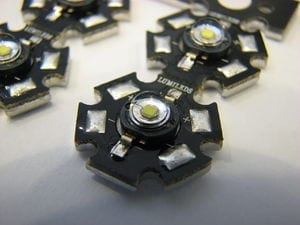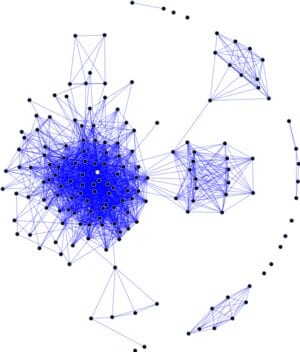Color, control and function are all being reassessed, and new players have emerged like a wave of Silicon Valley start-ups.
AFTER the joy of the birth itself, parenthood sometimes brings the unwelcome news that a newborn has jaundice and must wear goggles and be placed under special lights. Imagine how different this experience might be if there were no goggles, just a warm blanket covering the tiny body, a healing frequency of blue light emanating from its folds.
That comforting scene, already a reality in some hospitals, is evidence of the fundamental rethinking of lighting now under way in research labs, executive offices and investor conferences. Digital revolutionaries have Edison’s 130-year-old industry, and its $100 billion in worldwide revenue, in their sights. Color, control and function are all being reassessed, and new players have emerged like a wave of Silicon Valley start-ups.
“This is the move from the last industrial-age analog technology to a digital technology,” said Fred Maxik, the chief technology officer with the Lighting Science Group Corporation, one of many newer players in the field.
The efforts start with energy efficiency and cost savings but go far beyond replacing inefficient incandescent bulbs. Light’s potential to heal, soothe, invigorate or safeguard people is being exploited to introduce products like the blanket, versions of which are offered by General Electric and in development at Philips, the Dutch electronics giant.
Innovations on the horizon range from smart lampposts that can sense gas hazards to lights harnessed for office productivity or even to cure jet lag. Digital lighting based on light-emitting diodes — LEDs — offers the opportunity to flit beams delicately across stages like the San Francisco-Oakland Bay Bridge — creating a light sculpture more elegant than the garish marketers’ light shows on display in Times Square, Piccadilly Circus and the Shibuya district in Tokyo.
“Up till now we only thought — do I have enough light to see, to clean my room, to cut a diamond?” said Ed Crawford, a senior vice president of Philips Lighting Americas. “Now it impacts what I do, how I feel, in emotional ways.”
In the United States, lighting consumes more than 20 percent of electric power generated each year; the Energy Department says LEDs can cut consumption by up to 80 percent. LEDs — also called solid-state lighting — are already a $12.5 billion business worldwide, according to analysts at the research firm Strategies Unlimited in Mountain View, Calif. A 2012 McKinsey report estimates LEDs will be an $84 billion business by 2020.
But there is an obstacle or two facing the LED revolutionaries. One is existing modes of lighting: Edison’s screw-based socket, the office’s fluorescent ceiling tubes, and metal halide or sodium lights in parking lots are not going away anytime soon.
Another hurdle is public wariness after the environmental exhortations of the 2000s, which led to much-disputed federal legislation to phase out the old incandescents, often in favor of compact fluorescent bulbs. In pursuing their goals, advocates played down problems like the harshness of fluorescent light, and difficulties with dimming the bulbs and dealing with the toxic mercury they contain. Now, some lighting scientists say, both consumers and investors are leery of buying into something they suspect might be substandard.
Another powerful force for continuity is the psychological legacy of light as we know it — from sun to candle to bulb. Isn’t the cartoon shorthand for a new idea a glowing bulb over the thinker’s head?
So some companies are selling the new digital lighting in forms that will fit into the prerevolutionary world, with its sockets and streetlamps — including familiar bulb shapes.
Philips is producing a bulb called Hue that fits into the old sockets and not only dims and brightens, but also changes colors on command. Mr. Crawford said that in his lamps division, 25 percent of sales income now comes from LEDs; he expects it to increase to 50 percent in two years. In 2008, that number was close to zero.
The Latest Bing News on:
Rethinking of Light
- Rethinking wellness travel: the rise of active well-beingon April 25, 2024 at 1:35 am
Based on a deep dive into the main demand drivers of wellness travel, Mabrian, traces back the evolution of this segment and its key drivers.
- Rethinking flexibility: Why stretching isn’t always the solutionon April 15, 2024 at 5:00 pm
(CNN) — For years, conventional wisdom in fitness culture has promoted the belief that stretching to become more flexible leads to better movement and injury prevention. But what if I told you ...
- Rethinking galactic origins of interstellar clouds with heavy-element mapping: Research challenges conventional theoryon March 11, 2024 at 6:49 am
A groundbreaking study of the origins of intermediate-velocity clouds (IVCs) challenges a 20-year-old theory and suggests a new era of deep-space research. Researchers at Nagoya University in ...
- Rethinking galactic origins through heavy-element mapping challenges conventional theoryon March 7, 2024 at 4:00 pm
IVCs are a type of interstellar cloud characterized by their velocity. They are found at altitudes of thousands of light years away throughout the Milky Way. Gas clouds are important because they ...
- Why Design Pros Would Recommend Rethinking Pastel Carpetson December 19, 2023 at 10:34 pm
So, you're thinking of updating your carpet ... Carpet colors like white and light pastels are very refreshing at first when they're brand new and clean, but over time, the pretty look starts ...
- RETHINKING PLANNING THEORY AND PRACTICE: A GLIMMER OF LIGHT FOR PROSPECTS OF INTEGRATED PLANNING TO COMBAT COMPLEX URBAN REALITIESon September 27, 2023 at 11:21 am
Your Artstor image groups were copied to Workspace. The Artstor website will be retired on Aug 1st. Theoretical and Empirical Researches in ... AbstractThroughout the past half century, there has been ...
- Rethinking Povertyon August 13, 2014 at 11:55 am
Margaret grew up in the Patterson Way Apartments, a notorious drug-infested public housing development in South Boston. By the time she was 16, both her mother and her father had died, and her ...
The Latest Google Headlines on:
Rethinking of Light
[google_news title=”” keyword=”Rethinking of Light” num_posts=”10″ blurb_length=”0″ show_thumb=”left”]
The Latest Bing News on:
Digital lighting
- Insights on the downsides of late-night screen time and health benefits of digital detoxon April 27, 2024 at 4:59 am
According to a YouGov study on sleep, 87% of Britons say they look at their phone or tablet within an hour before going to bed, with 25% claiming they look at their phone immediately before going to ...
- Exploring Minority Languages in the Digital Age: New Book Sheds Light on Cultural Preservation and Innovationon April 26, 2024 at 9:40 pm
A researcher from Aston University has co-edited a book that explores the intricate relationship between technology, language policy and cultural identity, presenting case studies of digital ...
- One year with the Light Phone 2on April 26, 2024 at 8:25 am
T he first time I used the Light Phone 2’s GPS, I drove to Los Angeles for a date. I ended up parked in a red zone, hyperventilating to the rhythm of my hazard lights. All I did ...
- Ram Announces New Off-road Truck Lineup With Benchmark Light- and Heavy-duty Offeringson April 26, 2024 at 7:58 am
Ram unveils its most capable and affordable off-road truck lineup which includes both light- and heavy-duty models, such as the all-new 2025 Ram 1500 RHO, Rebel, Warlock, and the ...
- New ordinance calls on Jackson store owners to install cameras tied to city’s blue light camerason April 26, 2024 at 5:29 am
This week, the Jackson City Council approved a measure that requires store owners to install cameras that tie into the city’s blue light camera network.
- Zhiyun unveils a new professional COB light with "Max Extreme Mode"!on April 25, 2024 at 4:53 am
Just last week it announced an entirely new range of LED COB lights, named the B-series, that cater to enthusiasts up to professionals, with a power output range of 100-500W. Today, it has announced ...
- ARTHUR THE KING Arrives April 23 on Digital; DVD Release on May 28on April 22, 2024 at 10:58 am
Based on the “heart-swelling true story” (Courtney Howard, Variety) of friendship and loyalty, ARTHUR THE KING arrives on Premium Video on Demand and on April 23, and on DVD May 28 from Lionsgate.
- Dennis Quaid credits God for his happy marriage, 'she's the light of my life'on April 20, 2024 at 1:30 am
Actor Dennis Quaid pays no mind to critics of the nearly 40-year age gap in his marriage to Laura Savoie, whom he calls "the light of my life." ...
- Anti-Israel agitators light flares outside Columbia University 'occupation'on April 18, 2024 at 7:09 am
Anti-Israel agitators lit flares at the "Gaza Solidarity Encampment" on Columbia University's campus overnight after the school's president testified before Congress.
- Digital Projection dazzles at Sharjah Light Festivalon April 17, 2024 at 2:22 am
The 12-day Sharjah Light Festival celebrated its 13th year, working with video-mapping specialist Artabestk to deliver a Digital Projection solution that included a 300mx50m projection on the side of ...
The Latest Google Headlines on:
Digital lighting
[google_news title=”” keyword=”digital lighting” num_posts=”10″ blurb_length=”0″ show_thumb=”left”]











